A traditional Karnataka style steamed finger millet dumpling. Served with sambhar or curry for a filling meal
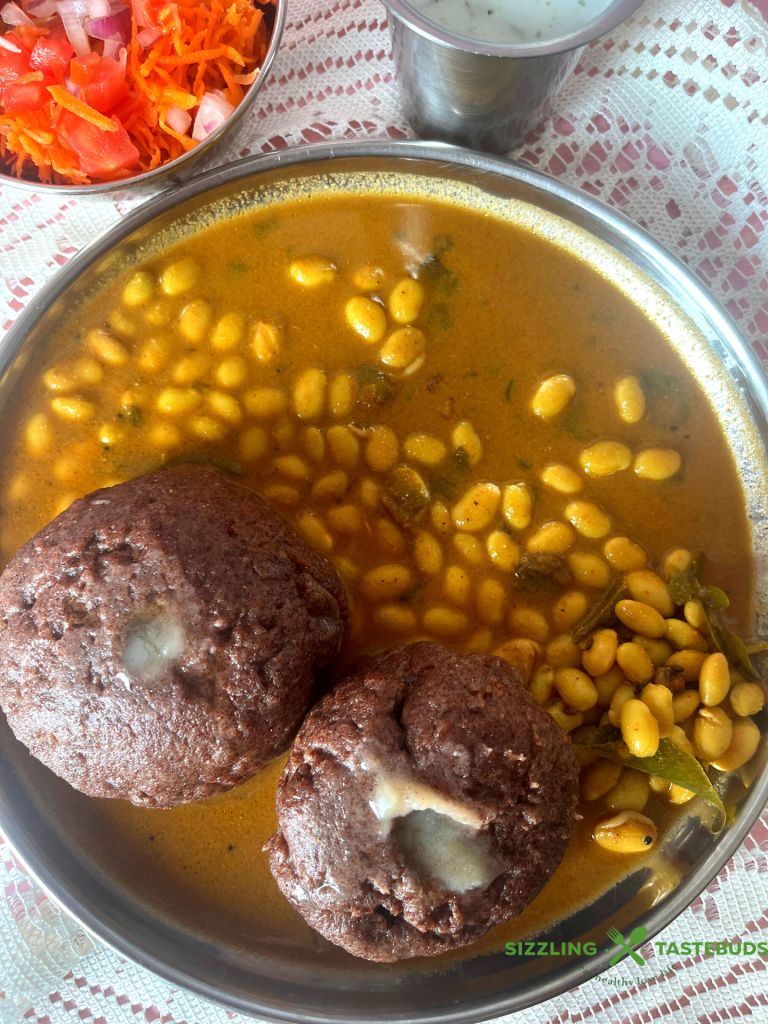
The goodness of Ragi in everyday diet !
Ragi / Finger millet, as mentioned in my posts on this millet is full of calcium and nutrients. As school kids, we used to have it as Ragi Hurittu or Ragi Porimaavu (homemade Puffed ragi cereal) with milk and sugar : I never liked the taste then, and was rather a forced consumption at my grand mom’s insistence to fill up Vitamin B12 (which this millet has in plenty) in a lady’s diet, especially in the pre-teens !
Wonder how wholesome and healthy our food was when we were kids – no fear of MSG or allergies of gluten ,nuts , dairy that today’s moms fear most : All foods taken in proportion and at right intervals ensured doctor visits were only a rarity 🙂 Although my kids (and ahem, ahem the husband man) started this late, this RAgi Rotti (flatbread made with Ragi – called Ragi Rotti – is a huge favourite now.
Other dishes using Ragi / FingerMillet you may like to try

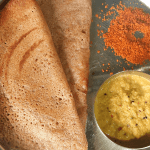
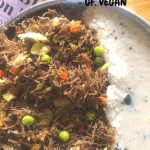
Coming back to today’s dish – Ragi Mudde (or steamed Ragi dumplings) – a very authentic Karnataka dish. Like most Ragi dishes, this is not too appealing to the eye, but is loaded with the goodness of calcium and amino acids. This dish takes a little practice to make, although it seems easy.
My trials were finally rewarded this week, when after many attempts, I made what seemed to even impress my mom 🙂 These dumplings go well with Soppina huli (greens sambhar) or Avarekaalina saaru (field beans sambhar) . This dish goes by the name of Ragi Sankati in Telugu.
Liked this recipe? SIGN UP FOR THE Sizzling Tastebuds Newsletter (No Spam, Promise!) for fresh, healthy and tasty recipes right into your inbox . Please consider leaving a star ???? rating on this recipe for us to get you the best recipes out there. FOLLOW Sizzling Tastebuds ON Facebook, Twitter, Pinterest AND Instsgram for fresh content, latest recipes and much more!
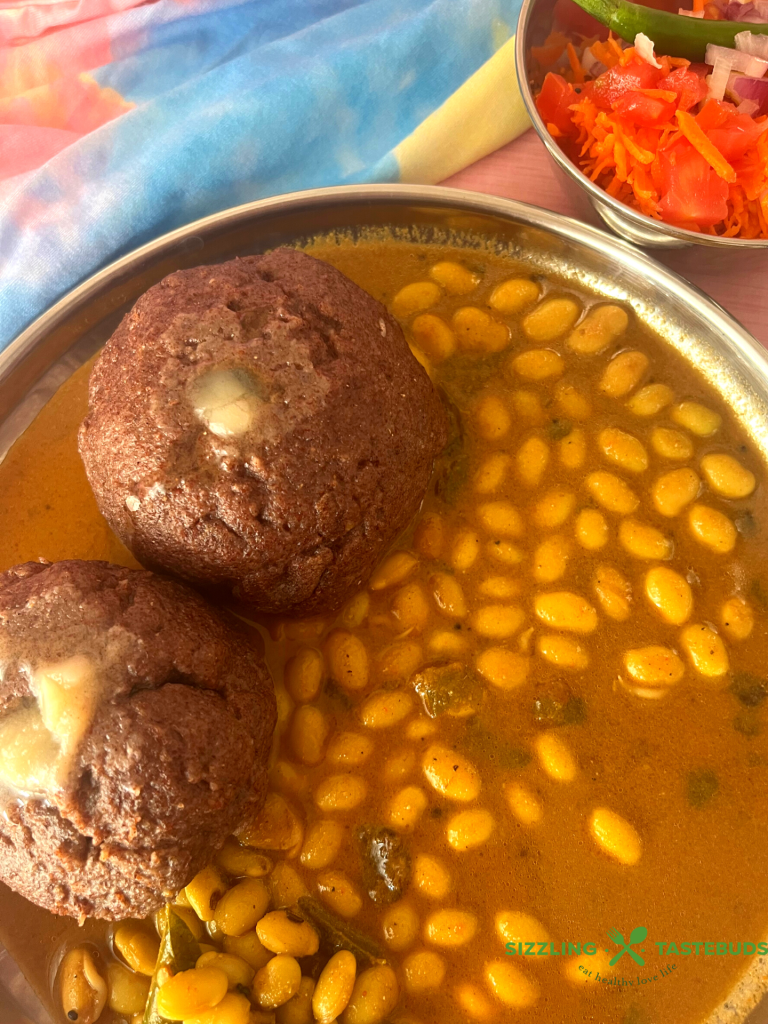
Preparation time: 10 mins ; Cooking time : 10 mins ; Serves : 2
Cuisine: Karnataka ; Course: Breakfast / Lunch
Ingredients to make Ragi mudde:
- 1 cup Finger millet flour (Ragi flour – about 200 grams)
- 2 cups Water (approx. 400 ml)
- 1/4 tsp Salt
- 1 TBSP Ghee (sub with oil for a vegan version)
To make a slurry
- 1 TBSP Finger millet flour
- 1/4 cup water (room temperature)
PIN FOR LATER
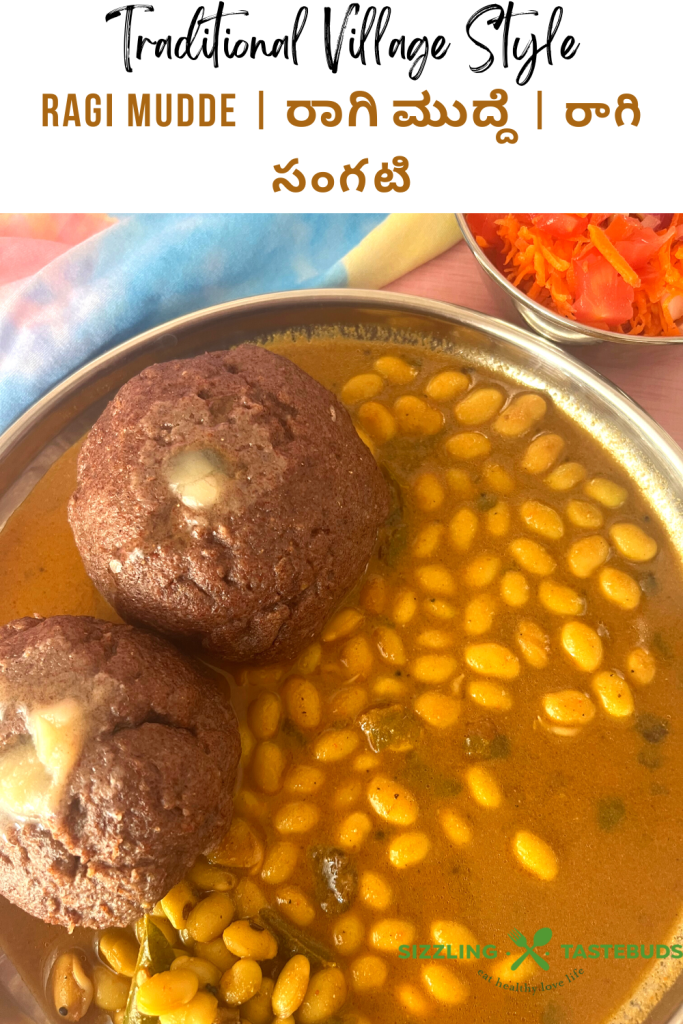
Method to make Ragi Mudde:
- First sieve the flour well twice over
- Make a slurry of the 1 TBSP ragi in the 1/4 cup water to a smooth slurry without any lumps
- In a deep bottomed pan, boil 2 cups of water with salt and 1/2 tsp of ghee or oil.
- When it comes to rolling boil, pour the slurry into the water and keep stirring this for 1-2 mins till it slightly froths
- Let the mixture boil
- Now add the dry flour in batches – do NOT MIX for 3-4 mins
- Let it cook without a lid in the steam generated by the bubbling slurry + water on MEDIUM heat
- After 3 mins, with a wooden ladle, lower the heat and briskly mix the dumpling dough well to prevent lumps
- Depending on the quality of the flour and freshness, you may need 4-5 tsp of additional HOT water to bring the dough without any dry streaks.
- Do NOT add cold water at this stage else the dumpling dough will harden
- At this stage, turn the heat to medium, and let the dumpling dough cook for 3-4 mins
- Sprinkle 1-2 tsp of water at this stage ONLY if you feel it is drying out
- To test if done, wet your hands and touch the dough in the pan – the mass should not stick to your fingers
- Once done, switch off the heat and let it rest for 2-3 mins till you can handle the hot dough
- Transfer to a lightly greased oil plate or a chapati rolling board.
- Knead well with damp hands for 1-2 minutes
- Pinch out medium sweet lime sized dumplings and serve HOT with ghee (skip for vegan) and a curry
- Here it is served with Avarekaalu saaru (field beans / hyacinth beans curry)
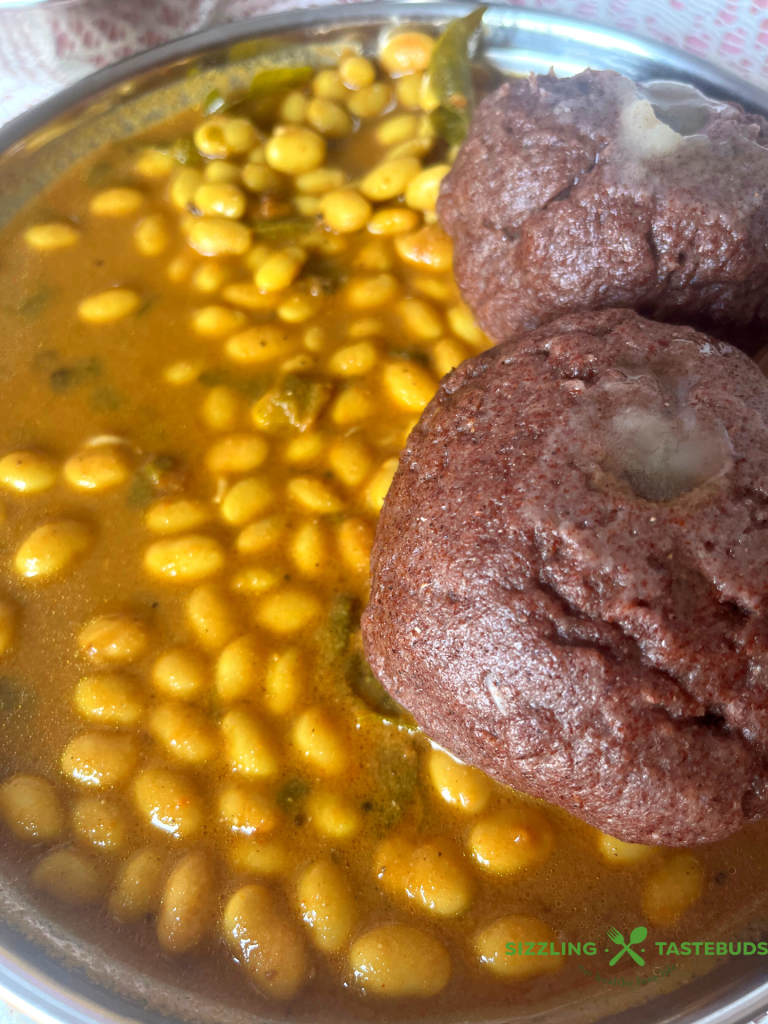
6 handy tips to make soft and Lump free Ragi Mudde effortlessly
- Sieve the flour always, bring all ingredients to room temperature if using the flour from a refrigerator
- Keep extra boiling water handy to adjust the ratio of water
- Freshly milled flour takes up slightly less whereas older flours may require more water
- Once the slurry boils, add the dry flour in batches
- You may add 1 tsp oil to the boiling water before adding the slurry to keep it extra soft and moist – this totally optional though
- Once the dry flour is added, do not mix at once. Follow the steps indicated in the recipe for best results
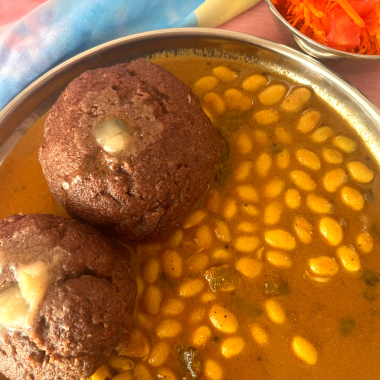
Ragi Mudde / Ragi Sankati / Steamed Finger Millet Dumplings
Equipment
- Thick Bottomed Pan I used heavy duty Nonstick
- Wooden ladle sub with silicone spatula
- Measuring cups
Ingredients
- 1 cup Finger millet flour Ragi flour – 1 cup
- 2 cups water
- 1/4 tsp salt
- 1 TBSP Ghee sub with oil for a vegan version
To make a slurry
- 1 TBSP Finger millet flour
- 1/4 cup water room temperature
Instructions
- First sieve the flour well twice over
- Make a slurry of the 1 TBSP ragi in the 1/4 cup water to a smooth slurry without any lumps
- In a deep bottomed pan, boil 2 cups of water with salt and 1/2 tsp of ghee or oil.
- When it comes to rolling boil, pour the slurry into the water and keep stirring this for 1-2 mins till it slightly froths
- Let the mixture boil
- Now add the dry flour in batches – do NOT MIX for 3-4 mins
- Let it cook without a lid in the steam generated by the bubbling slurry + water
- After 3 mins, with a wooden ladle, lower the heat and briskly mix the dumpling dough well to prevent lumps
- Depending on the quality of the flour and freshness, you may need 4-5 tsp of additional HOT water to bring the dough without any dry streaks
- Do NOT add cold water at this stage else the dumpling dough will harden
- At this stage, turn the heat to medium, and let the dumpling dough cook for 3-4 mins
- Sprinkle 1-2 tsp of water at this stage ONLY if you feel it is drying out
- To test if done, wet your hands and touch the dough in the pan – the mass should not stick to your fingers
- Once done, switch off the heat and let it rest for 2-3 mins till you can handle the hot dough
- Transfer to a lightly greased oil plate or a chapati rolling board.
- Knead well with damp hands for 1-2 minutes
- Pinch out medium sweet lime sized dumplings and serve HOT with ghee (skip for vegan) and a curry
- Here it is served with avarekaalu huli (field beans / hyacinth beans) gravy
Notes
- Sieve the flour always, bring all ingredients to room temperature if using the flour from a refrigerator
- Keep extra boiling water handy to adjust the ratio of water
- Freshly milled flour takes up slightly less whereas older flours may require more water
- Once the slurry boils, add the dry flour in batches
- You may add 1 tsp oil to the boiling water before adding the slurry to keep it extra soft and moist – this totally optional though
- Once the dry flour is added, do not mix at once. Follow the steps indicated in the recipe for best results

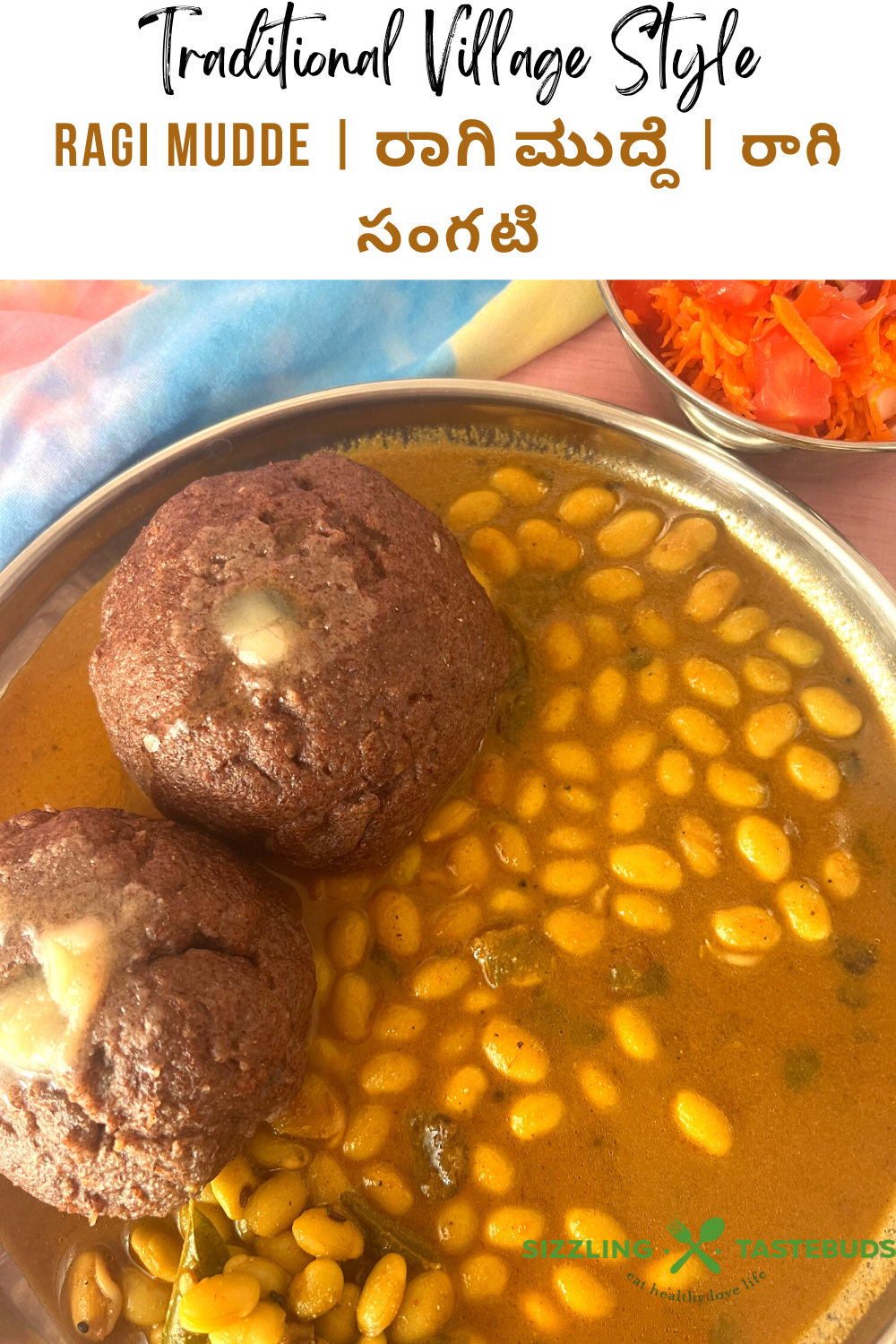



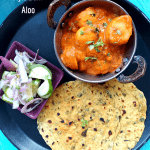

That is delicious and so healthy!!! thanks for sharing this authentic and tasty dish!!
chowringhee